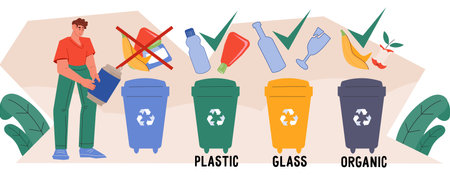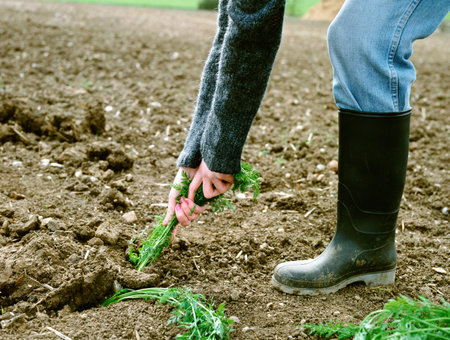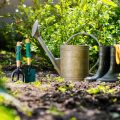Introduction to Composting on Allotments
Composting is an integral practice for organic growers across the United Kingdom, especially within the context of allotment gardening. Allotments provide a unique opportunity for communities and individuals to cultivate their own produce, and composting forms the backbone of sustainable soil management in these shared spaces. By transforming garden and kitchen waste into nutrient-rich humus, composting not only reduces landfill contributions but also enhances soil fertility, supports healthy plant growth, and fosters biodiversity. For UK organic growers, effective composting aligns with local environmental goals and helps maintain compliance with organic standards. Understanding the principles and benefits of composting on allotments is essential for anyone seeking to maximise productivity while minimising environmental impact.
Choosing the Right Composting System
When planning an effective composting strategy for your allotment, it’s essential to select a system that aligns with both your growing goals and the typical UK allotment environment. The main options—compost bins, heaps, and wormeries—each offer distinct advantages and suit different plot sizes, available materials, and levels of maintenance commitment. Below is a comparative overview to help you identify the best fit for your organic growing needs.
| Composting System | Suitability for UK Allotments | Pros | Cons |
|---|---|---|---|
| Compost Bin | Ideal for small to medium plots; keeps sites tidy | Neat appearance, retains heat well, deters pests | Requires regular turning, initial cost for bin |
| Compost Heap | Best for larger plots or communal areas | No cost if DIY, easy to add large volumes of material | Can be untidy, slower process, attracts rodents if not managed |
| Wormery (Vermicomposting) | Suited to growers wanting high-quality compost in limited space | Produces nutrient-rich vermicompost and liquid feed, compact size | Sensitive to temperature changes, requires specific feedstock balance |
Key Considerations for UK Allotments
- Space: Urban and suburban plots may benefit from compact bins or wormeries; rural sites may allow for larger heaps.
- Pest Management: Secure lids and rodent-proof bases are important for urban allotments.
- Material Availability: Choose a system that matches the type and quantity of green (kitchen waste) and brown (woody prunings) materials you regularly generate.
Sustainability Tip:
If possible, repurpose pallets or reclaimed timber to construct your own bin or heap. This approach reflects the resourcefulness valued within many UK allotment communities.
Summary Guidance:
The right composting system depends on your plot’s size, the volume of organic waste produced, and your willingness to manage the process. Most UK organic growers find that starting with a sturdy compost bin provides an efficient introduction to composting before experimenting with heaps or wormeries as their confidence grows.

3. Suitable Materials for Composting
When it comes to successful composting on British allotments, selecting the right materials is fundamental. Organic growers should focus on making use of locally available and seasonal waste, which not only supports sustainable gardening but also ensures nutrient-rich compost tailored to your plot’s specific needs.
Locally Available Green Materials
Green materials are rich in nitrogen and play a vital role in activating the composting process. On UK allotments, common green materials include:
- Vegetable peelings and trimmings from home or plot-grown produce
- Fresh grass clippings (avoiding large clumps to prevent compaction)
- Spent annual plants and soft prunings
- Coffee grounds and tea leaves (loose or in paper bags)
Brown Materials for Balance
Browns provide carbon, essential for balancing out greens and maintaining an effective compost heap. Allotment holders can incorporate:
- Dry leaves gathered in autumn
- Straw, hay, or shredded cardboard
- Paper towels and newspaper (shredded)
- Wood chips or sawdust (in moderation)
Seasonal Waste from the Allotment
The rhythm of the British growing season generates its own unique compostable waste. In spring and summer, surplus young weeds (before they set seed), thinned seedlings, and spent flower heads are excellent additions. Autumn brings abundant leaf fall, while winter pruning provides woody stems that benefit from chopping before composting.
What to Avoid
For healthy, organic compost, refrain from adding cooked food, dairy products, meat, diseased plants, or perennial weed roots such as bindweed or couch grass. These can attract pests or spread diseases within your allotment community.
By focusing on suitable local materials and managing them seasonally, UK organic growers can create high-quality compost that nourishes their plots year-round.
4. Effective Composting Techniques
Creating high-quality compost on your allotment in the UK requires attention to several key techniques that address the unique challenges posed by local climates. The following best practices focus on layering, turning, moisture control, and troubleshooting common issues, ensuring that organic growers achieve nutrient-rich results for their plots.
Best Practices for Layering
Layering is fundamental to successful composting. Alternating between greens (nitrogen-rich materials) and browns (carbon-rich materials) helps maintain a balanced compost heap. In the UK, where grass clippings and kitchen scraps are plentiful, its essential to counterbalance with dry leaves, cardboard, or straw—especially after periods of heavy rain.
| Material Type | Examples | Recommended Layer Thickness |
|---|---|---|
| Greens (Nitrogen) | Grass clippings, vegetable peelings | 5-10 cm |
| Browns (Carbon) | Dried leaves, shredded cardboard | 5-15 cm |
Turning: Aeration and Temperature Control
Turning the compost pile regularly introduces oxygen and promotes microbial activity. On UK allotments, aim to turn the heap every 2-3 weeks during spring and summer, and once a month in autumn and winter. This prevents compaction from frequent rainfall and ensures even decomposition.
Turning Tips:
- Use a garden fork for efficient mixing.
- Check for steam or warmth at the core – signs of active breakdown.
- If the pile is cool or smells anaerobic, increase the frequency of turning.
Moisture Control: Adapting to UK Weather
The UKs variable climate means moisture management is critical. The ideal compost should feel like a wrung-out sponge—damp but not soggy. Heavy rains may cause waterlogging, while dry spells can lead to desiccation.
| Condition | Troubleshooting Action |
|---|---|
| Too Wet (soggy or smelly) | Add more browns (dry material), cover with tarpaulin during rain. |
| Too Dry (crumbly, slow breakdown) | Add greens or sprinkle water evenly over the heap. |
Troubleshooting Common Issues Specific to UK Allotments
Certain problems are particularly prevalent in British climates:
- Sour odours: Often caused by excess moisture; remedy by adding dry browns and increasing aeration.
- Pests (rats/foxes): Avoid adding cooked food or meat; use rodent-proof bins if necessary.
- Soggy heaps in winter: Raise compost bins off the ground for better drainage and cover during persistent rainfall.
- Slow decomposition: Chop up larger items and ensure a good balance between greens and browns; insulate bins with hessian sacks or bubble wrap during colder months to maintain microbial activity.
Summary Table: Quick Reference for UK Growers
| Technique | UK-Specific Advice |
|---|---|
| Layering | Alternate greens/browns with extra browns after rain. |
| Turning | Aerate more frequently in wet weather to prevent compaction. |
| Moisture Control | Cover heap in rain; add water in droughts. |
| Troubleshooting | Pest-proof bins; raise off ground in winter; insulate when cold. |
5. Using Your Finished Compost
Once your compost has matured into a dark, crumbly, and earthy-smelling material, it is ready to be applied to your allotment beds. Knowing how and when to utilise homemade compost is crucial for maximising the health and productivity of your organic crops.
When to Apply Compost
The best time to incorporate compost into your allotment soil is during early spring or autumn. In spring, apply compost a few weeks before sowing or planting to allow nutrients to become available as the growing season begins. Autumn application helps improve soil structure over winter, preparing beds for the following year’s crops.
How to Apply Compost
Top Dressing
Spread a 2–5cm layer of finished compost directly onto the surface of your beds. This method enriches the soil gradually, encouraging earthworms and other soil organisms to work it in naturally.
Digging In
For new or depleted beds, dig compost into the top 15–20cm of soil. This is particularly beneficial for heavy clay or sandy soils in need of organic matter to improve texture and nutrient retention.
Around Established Plants
Cultivate gently around perennials or existing crops and add a layer of compost around the base of plants, keeping it away from direct contact with stems to prevent rot.
Best Practices for Organic Growers
- Use only fully decomposed compost to avoid introducing weed seeds or pathogens.
- Avoid over-application; too much can lead to nutrient imbalances.
- Rotate where you add compost each year to ensure even improvement across all beds.
Maximising Benefits
Homemade compost not only boosts soil fertility but also enhances moisture retention and supports beneficial soil life — essential for successful organic growing on British allotments. By timing applications strategically and using the right techniques, you’ll foster robust growth and healthier harvests season after season.
6. Composting Etiquette and Allotment Regulations
Composting on shared allotment sites is not only about producing nutrient-rich soil, but also about maintaining harmonious relationships with your fellow plot holders and adhering to local authority guidelines. Understanding and observing composting etiquette ensures that everyone enjoys a productive and pleasant environment.
Common Allotment Composting Rules
Most UK allotment sites have clear regulations regarding composting to prevent issues such as odour, vermin, and unsightly heaps. Typically, only green waste generated on-site—such as vegetable peelings, grass clippings, and prunings—is permitted in compost bins. Bringing in large quantities of kitchen waste or non-organic material is usually prohibited. It is essential to regularly turn your compost heap and ensure it remains tidy and contained within designated areas.
Neighbourly Conduct
Good neighbourliness is key to allotment life. Place your compost bin or heap in a location that does not encroach upon pathways or neighbouring plots, and avoid positioning it too close to other gardeners’ seating areas or sheds. Manage your compost responsibly to prevent unpleasant smells and discourage pests like rats or flies. If you are unsure about what is acceptable, consult more experienced growers or your site representative for advice.
Local Council Guidelines
Each local council may set its own specific rules regarding composting facilities and practices on allotments. These can include restrictions on the size or type of bins allowed, prohibition of bonfires for disposal of organic waste, or requirements for communal composting schemes. Always review your tenancy agreement and the latest council notices to ensure compliance. Adhering to these guidelines not only avoids penalties but also promotes sustainable growing practices across the community.
By respecting both formal regulations and informal codes of conduct, organic growers can make the most of their composting efforts while supporting a thriving, cooperative allotment culture in line with British values of community gardening.


